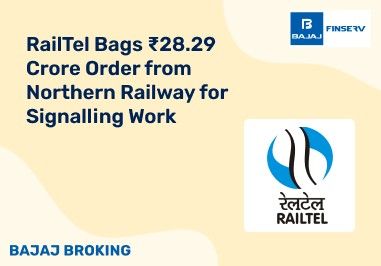AMO or After Market Order is exactly what it sounds like, i.e. a provision that stockbrokers offer their clients that lets traders and investors buy and sell securities beyond the usual trading hours of 9:15 AM to 3:30 PM daily, Monday through Friday. Any orders placed after these timings is considered an AMO or an After Market Order.
An After Market Order is also called an ‘advance order’ as it is made after the stock market closes but is only processed the next working day, when the market opens, during regular trading hours. This provision can only be applied to specific stocks or securities and helps the investors who were not able to place orders during regular market hours buy and sell securities effectively. The issue with AMOs is that investors cannot place a stop loss, bracket or cover order on them though you can still place a limit order on them.
How does an After Market Order Work?
An AMO works as the best option for anyone who wants to invest in the stock market but is not able to find time to do so during regular hours. So if you are someone who wants to juggle your everyday life like your work with investing in stock marketing, AMOs might be the best way to do so. Placing an AMO is not rocket science and can be done quite easily with the help of your stockbroker. To help you understand how an AMO works, listed below is an example.
Let’s say you want to place an After Market Order for 30 shares of company A on NSE at 8:00 PM at the market price. This AMO will be sent to your stockbroker and with them till 8:58 AM the next trading day. Then, at 9:00 AM, this order is sent to the stock exchange by your stockbroker.
When, at 9:15 AM, the exchange’s operations open, your order is placed at the stock’s opening market rate.
Features of Using After-Market Orders
There are certain features or characteristics that you need to remember when using AMOs. These are listed below:
Market or Limit Orders:
Cancellation or Modification:
Even after placing an AMO, traders can control their trading choices
This ensures that they can change or cancel their AMO anytime.
Bracket and Cover Order Exclusion:
There is only a limited range of order types in AMOs
This is because, unlike traditional trading, you cannot place bracket or cover orders in AMOs.
No Stop Loss and Disclosed Quantity Orders:
Another difference between traditional trading and placing an AMO is that two provisions in regular trading are not applicable to AMOs
These are stop loss and disclosed quantity orders,which are not supported by AMOs.
Exchange-Specified Price Range:
Types of After Market Order
Listed below are the different types of AMOs or After Market Orders:
Market orders:
These orders provide specific instructions to our stockbroker to buy or sell orders at the market price.
The main objective behind placing a market order is to want to close the deal as soon as possible.
Here the real execution price of the stocks would vary from the recent trading price.
Limit Orders:
With limit orders, traders can specify a price range at which they are willing to buy or sell a particular security.
This also means that a trader has defined their own minimum sleeping prior to a maximum selling price.
Stop Orders:
Stop orders are exceptionally helpful when traders want to carry out transactions at a fixed price
They can also be used to hedge against any potential for losses.
If you want to sell a stop order, you need to place it below the going rate in the market.
Benefits of Using After-Market Orders
There are quite a few benefits of using AMOs. Some of them are listed below:
The best thing about an AMO is that a trader can cancel or alter it at any time. This helps them steer clear of potential losses that could be the result of unforeseen events.
You can pls an After Market Order for almost any type of security like equity, F&O, Forex, etc.
AMOs can also be placed on Saturdays and Sundays, even though the stock market is not open on these days. When you place an AMO on these days, it will go into the market on the next trading day.
Risks of Using After-Market Orders
Though there are quite a few benefits to AMOs, like any other trading order, there are a couple of risks that come with them as well. Here is a list of some of them:
AMOs usually include trading in low volumes which can make it difficult for traders to purchase or sell shares of top-performing companies. This means that AMOs turn out to be lower in liquidity than traditional orders
The prices quoted in AMOs are not the consolidated prices that are offered during regular trading hours, resulting in traders not being able to capitalize on the best price.
AMOs do not allow bracket, cover or stop-loss orders
Since AMOs offer limited liquidity, prices can get erratic making it difficult for stockbrokers to fill the orders.
There is a limited volume of stocks available in AMOs thus making it a more competitive way to trade on the stock market.
How to Place an After-Market Order
Here's a step-by-step guide on how to place an After Market Order:
Begin by logging into your brokerage account with all your login details
Next, you need to search for the shares you want to invest in and select it from the list displayed
Now choose whether you want to place a buy or sell order
Next, you need to select the type of trade you want to do like MIS, CNC, etc.
From here, you need to tap on the AMO option that you see on the screen.
Choose between placing a Limit Order or a Market Order.
Write how many shares you want to trade or the trade price if you are placing a limit order.
Finish by clicking the Buy or Sell option.
Tips for Using After-Market Orders
By keeping certain tips in mind and tricks up your sleeve, you can place a successful After Market Order.
Traders should confirm their eligibility from their broker keeping in mind how companies let the market know whether they will be taking After Market Orders or not.
Traders can also look up trading and stock charting platforms to consult the list of pre-market and after-market orders.
It is also important to have a good trading strategy in place before placing an After Market Order. Make sure this strategy includes the potential to alter or cancel an order if the need arises.
It is also advisable that traders opt for smaller position sizes when placing AMOs compared to placing regular orders.
After-Market Orders vs Regular Market Orders
Listed below are some of the main differences between AMOs and regular market orders.
Criteria
| Regular market orders
| After market orders
|
Order Timings
| Market orders can be placed between 9:15 AM to 3:30 PM in India.
| Orders can be placed after the market closes or before it opens but they will only be added to the market during regular working hours.
|
Order Type
| Allows investors to place market orders and limit orders.
| Investors can only place limit orders
|
Participants
| Greater participation during normal trading hours
| Less number of participants during after hours
|
Liquidity
| With more investors comes higher liquidity
| Fewer investors means less liquidity
|
Volatility
| There is lower volatility when placing regular trading orders
| After market orders carry higher volatility with them
|
Conclusion
Though there was a ban on trading past normal hours in the Indian stock market initially, with the introduction of After Market Orders, this has changed for the better. AMOs now form a crucial part of the trading experience and work wonderfully for traders who are trying to balance their regular woke life with their trading experience. With the help of AMOs, traders can trade past the normal market hours with ease with the help of their stockbroker. Another wonderful thing about AMOs is that they can also be placed on Saturdays and Sundays, despite the stock market staying closed on these days. When traders place an AMO on a Saturday or a Sunday, the order will remain with the stockbroker till the morning of the next trading day, i.e. Monday before being executed.
Disclaimer: Investments in the securities market are subject to market risk, read all related documents carefully before investing.
This content is for educational purposes only. Securities quoted are exemplary and not recommendatory.
For All Disclaimers Click Here: https://bit.ly/3Tcsfuc














